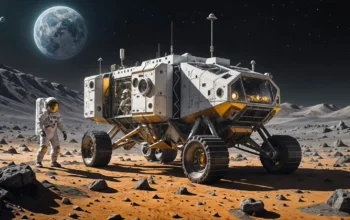Amazon is set to revolutionize global internet connectivity through its ambitious Project Kuiper, aiming to deploy a satellite constellation that will rival Elon Musk’s Starlink. This initiative seeks to provide high-speed, low-latency internet access worldwide, especially in underserved regions.
Project Kuiper: An Overview
Announced in 2019, Project Kuiper is Amazon’s endeavor to establish a satellite network comprising over 3,200 satellites in low Earth orbit (LEO). The primary objective is to deliver broadband internet services globally, targeting areas with limited or no access to reliable internet.
Upcoming Launch of Kuiper Satellites
The first significant milestone of Project Kuiper is the launch of 27 satellites, scheduled for April 9, 2025. These satellites will be deployed aboard an Atlas V rocket from United Launch Alliance, taking off from Cape Canaveral Space Force Station in Florida. This launch marks the beginning of Amazon’s plan to create a satellite network capable of competing with existing services like Starlink.
Technical Specifications and Service Goals
The Kuiper satellites are designed to operate at altitudes around 600 km, slightly higher than Starlink’s operational range of 550 km. Amazon envisions offering internet services with speeds up to 100 Mbps for mobile terminals and up to 1 Gbps for residential and enterprise users. The company plans to produce user terminals at a cost of less than $400 each, aiming to make the service accessible to a broad user base.
Competitive Landscape: Amazon vs. Starlink
Starlink, operated by SpaceX, currently dominates the satellite internet market with over 7,000 satellites and a user base of approximately 4.5 million across 100 countries. Amazon’s entry into this arena introduces a significant competitor, potentially altering the dynamics of global satellite internet services.
Strategic Partnerships and Launch Plans
To facilitate the rapid deployment of its satellite network, Amazon has secured launch agreements with multiple providers, including United Launch Alliance, Arianespace, Blue Origin, and SpaceX. These partnerships are crucial for meeting the ambitious timeline set for the deployment of the satellite constellation.
Addressing Challenges and Future Outlook
Deploying a satellite network of this magnitude presents numerous challenges, including manufacturing scalability, regulatory approvals, and technological hurdles. Amazon’s commitment to overcoming these obstacles is evident in its substantial investments and strategic collaborations. The success of Project Kuiper has the potential to reshape the global internet landscape, providing reliable connectivity to regions that have long been underserved.









